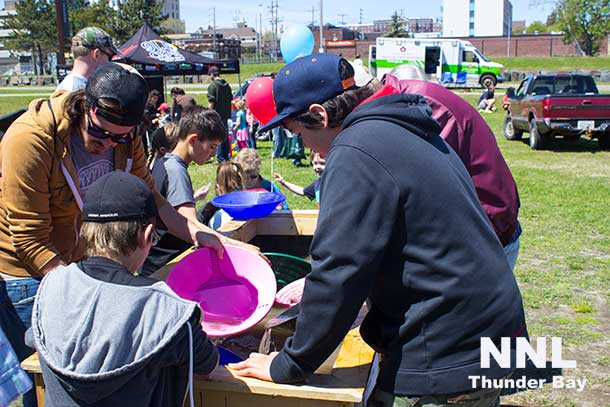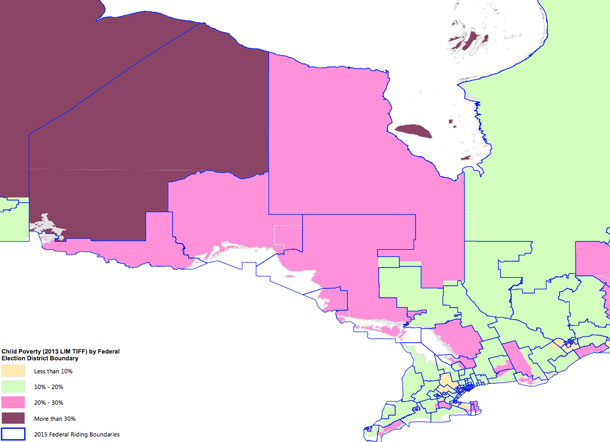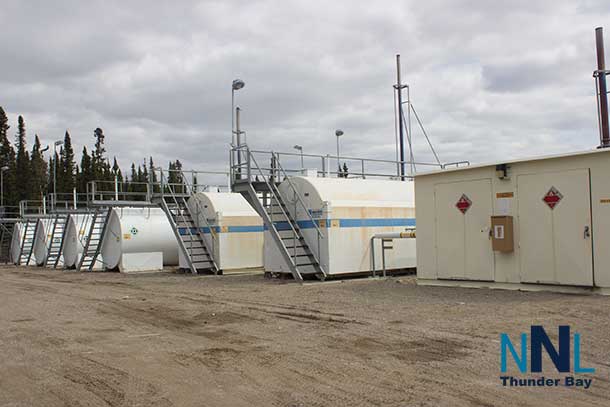 THUNDER BAY – EDITORIAL – Most people are focused on October 19th and the election. What is really important, and what is more important for Northwestern Ontario is what happens on October 20th and beyond. Once the campaign is over, and the rhetoric is safely stored away, it is time for real work.
THUNDER BAY – EDITORIAL – Most people are focused on October 19th and the election. What is really important, and what is more important for Northwestern Ontario is what happens on October 20th and beyond. Once the campaign is over, and the rhetoric is safely stored away, it is time for real work.
Our region faces challenges, and Thunder Bay faces challenges.
All of the elected leaders – regardless of their political party – need to start to really work hard on solving these issues. If not, nothing will change, and for Thunder Bay the long-term costs are going to be very high both financially and socially.
Many of the really important issues that have long-term impact on the health and well-being of residents across Northwestern Ontario still need to be addressed and solved.
The Ring of Fire
While many talk about the Ring of Fire, and honestly most of the politics around the potential mining boom are more talk than action, the reality is prices for chromite are the real factor in why there is no drilling, and no real action happening in the mining sector.
The quietest department in the Ontario provincial government in Ontario is the Ring of Fire Secretariat.
In the mining sector, mineral prices are cyclical.

When they come back, the mining project will jump back to the forefront.
The key is getting ready now, making sure that communities and people are fully consulted, and that any jobs are benefiting the people who are here in our region.
There have been some positive moves, the Ring of Fire Aboriginal Training Alliance (RoFATA) was a positive step in training people from Matawa First Nation Communities interested in working in the mining sector.
There have been moves toward assuring the public, mining companies and investors that the project is still viable. But what often has seemed missed is that mining, and mining investment is global. When mineral prices are down, activity slows to a crawl.
Until that cycle comes back around, there is not likely to be any major action in the Ring of Fire.
So what should be happening is a process of consultations, action to solve issues and concerns across Northwestern Ontario. Planning after that consultation is critical. However the consultation has to come first.

Poverty is a major issue across the north. A recent report puts thirty per cent of the young people in the North as living in poverty. That issue all on its own is contributing to many of the issues facing our region and facing Thunder Bay as the de facto regional capital.
For people living across the region, especially those in First Nations communities under boil water advisories, having safe clean drinking water, something millions of Canadians take for granted must become a major priority.
People living near where mines might be located who don’t have safe clean drinking water are not likely to be all that supportive of mining in their areas, because they know what is likely to happen once the mine ends operations.
Many First Nations activists are very wary of mining companies, and the senior governments. They have all seen what happens after the mines and industries in the North have extracted the wealth from the ground.
One of Canada’s unspoken crisis situations is the issue of safe, clean drinking water. While our international reputation is of a vast clean wilderness, hundreds of communities live under water advisories.
Many young people in some northern communities have never been able to take a drink of water out of their taps. In some communities the concerns with water are so bad they have never been able to bath or shower.
Those third world conditions should have political leaders at all levels hanging their heads in shame. That they are not moving faster to solve this issue speaks massive volumes in a voice that youth across First Nation communities in the north are hearing loudly and clearly.
The issue of education, in northern communities should be a priority where the federal government and the provincial government need to be working together to ensure that First Nation youth are getting the education equal to every other child in Ontario and Canada.
There are instances where youth are passed through the system, graduating grade eight and shipped out to high school in Thunder Bay unable to read. Once here, high school becomes a major challenge, and in far too many cases a path to failure.
It is more than just building schools. It is making sure that students are presented all of the opportunities that every other child in Ontario gets in their lives.
Right now, far too many of the students, coming to Thunder Bay, Kenora, Dryden, Sioux Lookout, Marathon and North Bay are not fully prepared and not fully ready academically.
A program that allows communities, grandparents, parents, and young people to be ready is vital.
In Ontario there is lots of political posturing that offers platitudes – but when it comes to real action, those platitudes simply fade away to inaction.
Thunder Bay is currently hosting an inquest into the deaths of seven young people – youth who came to the city to attend high school, and who returned home in coffins.
The inquest has been three years since the last death of a student.
Has enough been done?
There was a move started several years ago to build a youth residence. That program came through a report that youth had drafted – it appears that youth residence and the move to develop it have stalled for now.
In our region there has to be a greater focus on solutions, and far less talk. Perhaps it is time to realize that the time for discussion and more talk is over.
Most know what needs to be done, few appear willing to step up and do the hard work that is really needed.
What is really needed?
Drinking Water
Action on drinking water for Northern communities. When communities have been under boil-water advisories for up to twenty years, that is a sign that the problem is not being taken seriously.
What appears to happen is jurisdictional wrangling between who is really responsible. What is needed is action to assure that safe clean drinking water is there for the people.
The message being sent to people in Northern communities, and one that many youth are receiving loud and clear is that they really don’t matter and no one really cares.
Addiction
 Issues with addiction – drugs and alcohol are serious issues across the North. Some of that comes directly as a result of people struggling and suffering from decades of abuse in the Residential School system.
Issues with addiction – drugs and alcohol are serious issues across the North. Some of that comes directly as a result of people struggling and suffering from decades of abuse in the Residential School system.
Some comes when children grow up either in homes with addiction issues, or in cases where child care agencies who are mandated to protect children and to help families appear to be completely overwhelmed. Children end up in care, and family units remain broken.
Thunder Bay has a serious issue with homelessness. In the downtown Fort William business district there are people sleeping outside – either no room at Shelter House or they have been banned because of their behaviour. The City of Thunder Bay has met with the provincial government on the issue of homelessness in our city. Apparently there is a plan in the works, but nothing is planned for the next five or six months.
Education

Education is a massive issue that must be addressed. It is far more than buildings, and new schools although those are very critical components. What really hits hard is that youth in First Nation communities receive far less funding per student than in other communities across Ontario.
Seemingly left out of the process is that costs in the far north are far higher than they are in the south. When we leave the youth behind, we are ensuring that our future is going to be as bleak as those young people being left behind.
Real Action on Energy costs

The cost of energy in Northern communities is a major factor in the cost of living, and in the lack of economic development in the North.
Communities rely on Hydro One diesel powered generating stations to produce electricity. Recent moves by Hydro One have ignored lower price bids for transportation of diesel fuel into the north. That higher cost of that move, supported by some communities as a means of propping up one company which is struggling, has put consumers and economic development, not to mention competition on the back burner.
The high cost of food in the north often makes the news, and people look at the Northern Store prices as the problem. The reality is that it is not the price of food that is the real issue, it is the cost of energy.
Costs of heating, cooling, and living in Ontario’s North are all impacted by the cost of energy. Keeping a store open in the north costs more.
Transportation

The north in Ontario remains accessible mostly by air. From Thunder Bay, Sioux Lookout and Pickle Lake, for many communities the airplane is their only secure all-year-access too and from their communities.
Many of the northern First Nations are embracing the new economies from the growing competitive economy. Expanded air service into the North means competition for the passengers and greater competition for shipments into the north.
That competition is likely to make living in the far north easier, safer, and more affordable. It is also generating concerns in some communities which are slower to embrace change.
The Changing North
Over the past decade, in many ways patterns of action have become set. Change in the North is needed in order for real progress at the individual and community level. That change is coming, communications has improved, social media access has people across the north able to communicate with each other like never before.
Information flows north and south at the speed of the Internet, and in the Ontario North, moves to faster Internet are impacting change at an increasing pace.
Change is coming. It will be up to all the political and community leaders along with the people living across the North to work together to ensure that those changes are positive for everyone.
James Murray








